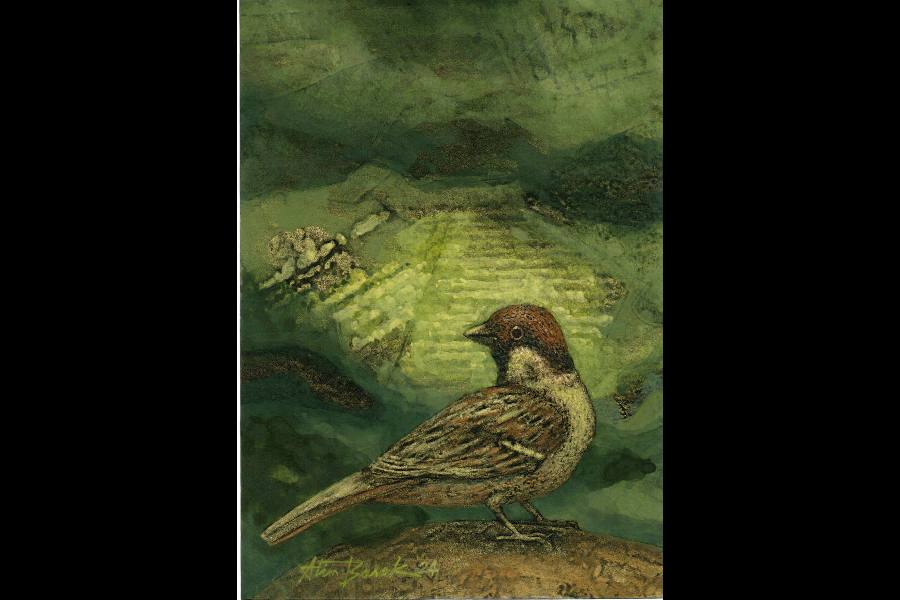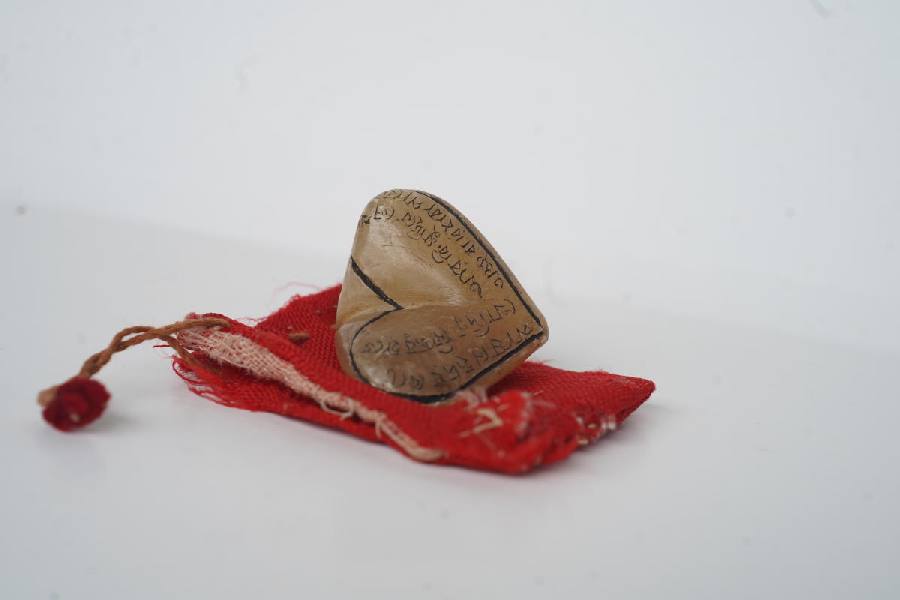To an unsuspecting viewer, the import of the tiny object that was on display at Debovasha for the exhibition, Hriday, might not seem like much. After all, it is only a quartz pebble carved in the shape of a heart with a few lines inscribed on it. But the diminutive size of the curio belies its mammoth historical importance — it is the only known piece of sculpture by Rabindranath Tagore. At the young age of 22, Tagore was given a pebble by his brother, Satyendranath Tagore, when he was staying with the latter in Karwar (then a part of the Bombay Presidency). The poet apparently carved the pebble in the shape of a heart — his choice of the Western heart shape opens up interesting avenues of exploration — for his beloved — her identity remains a mystery — and inscribed on it is the couplet, “Pashan hriday kete/ Khodinu nijer haate/ Aar ki muchhibe lekha/ Ashrubaridhara paate”. Incidentally, his muse and ‘notun bouthan’, Kadambari Debi, too, was in Karwar at the time. The heart of stone was ultimately gifted to the poet, Akshaychandra Choudhury, and has changed hands many times since then. Besides the historical value of the piece, the exhibition was fascinating for the literary, friendly and filial lineages that it traced and the number of lives that the heart touched.
Another exhibition hosted by Debovasha, this one was online, showcased Atin Basak’s tempera etchings. It was a deeply contemplative suite of works inhabited by meditative faces and Basak’s signature sparrows; but here, they are not harbingers of bad news. But more than the feelings that the pieces evoke, it is the textures on the etchings that are mesmerising.

An artwork by Atin Basak Debovasha
The contrast between the smoothness of the backwashes and the rusted metal-like corrosive grain of the skin was striking. However, viewing the pieces online inevitably detracts from their textural brilliance. While online exhibitions can increase the reach of art, nothing can replace the experience of taking in an artwork and its nuances in person.











